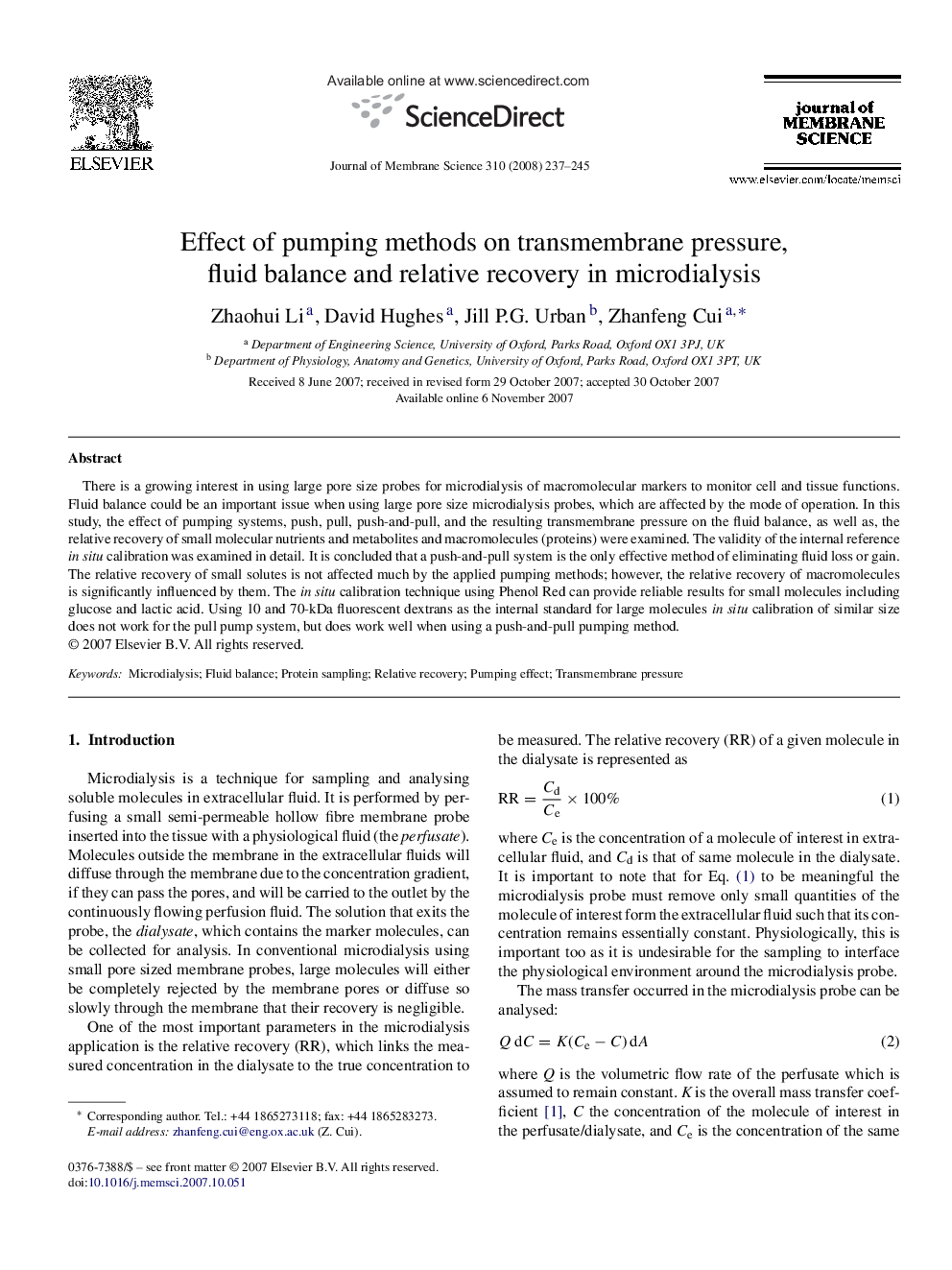| Article ID | Journal | Published Year | Pages | File Type |
|---|---|---|---|---|
| 638113 | Journal of Membrane Science | 2008 | 9 Pages |
There is a growing interest in using large pore size probes for microdialysis of macromolecular markers to monitor cell and tissue functions. Fluid balance could be an important issue when using large pore size microdialysis probes, which are affected by the mode of operation. In this study, the effect of pumping systems, push, pull, push-and-pull, and the resulting transmembrane pressure on the fluid balance, as well as, the relative recovery of small molecular nutrients and metabolites and macromolecules (proteins) were examined. The validity of the internal reference in situ calibration was examined in detail. It is concluded that a push-and-pull system is the only effective method of eliminating fluid loss or gain. The relative recovery of small solutes is not affected much by the applied pumping methods; however, the relative recovery of macromolecules is significantly influenced by them. The in situ calibration technique using Phenol Red can provide reliable results for small molecules including glucose and lactic acid. Using 10 and 70-kDa fluorescent dextrans as the internal standard for large molecules in situ calibration of similar size does not work for the pull pump system, but does work well when using a push-and-pull pumping method.
